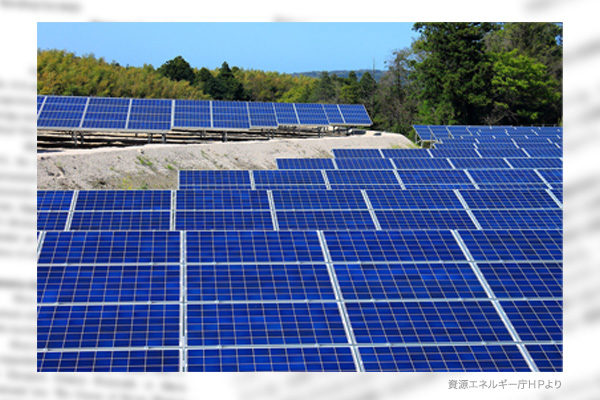A mega-solar photovoltaic plant is located near a point where a devastating mudslide originated following torrential rain on July 3 in Atami, Shizuoka Prefecture. While any relationship between the facility and the mudslide remains unknown, the government is investigating the facility. If regulations are toughened on solar PV facilities at disaster-prone mountainous locations, Japan’s solar PV promotion policy might be affected.
Mudslide mainly due to sloppy soil mound
The mudslide, which hit 122 houses over a distance of 2 kilometers and left nearly 30 people dead or missing, occurred as a 50,000-cubic-meter mound of soil collapsed due to torrential rain.
“If the traditional water path is filled with soil, it would cause a terrible incident,” local residents were quoted as saying before the mound was created. According to the Atami municipal government, it received and approved an application for mound development at the location in 2007 from a real estate company that owned the area. In response to later complaints from local residents, municipal officials checked the mound and found wood debris, bathroom tiles and other industrial wastes mixed into the soil. In 2011, a new owner of the land reportedly removed industrial wastes under the direction of the municipal government.
On July 9, geologist Kunio Shiosaka told a press conference that as the ridge was cut during the mound development, a rainwater catchment area was changed to allow more rainwater to flow into the mound and trigger the mudslide.
Local residents’ growing concerns
Satellite photos and video reports show massive solar PV panels installed on the cut ridge. On July 6, Economy, Trade and Industry Minister Hiroshi Kajiyama said the government would interview the solar PV plant operator and check water veins. Environment Minister Shinjiro Koizumi said he would consider regulations on solar PV plant siting.
Japan’s installed solar PV capacity totals 62 gigawatts. Its solar PV capacity per land area is by far the largest in the world, eight times as much as China’s and 23 times as much as the United States’. The government plans to install 20 GW more solar PV capacity by 2030. But construction and deforestation for installing mega-solar PV facilities in mountainous areas could not only impair scenery but affect disaster prevention and should be done cautiously.
The cause-to-effect relationship between the mega-solar PV plant and the Atami mudslide has not been confirmed. But people’s concerns over the installment of solar PV facilities in disaster-prone mountainous areas should be removed. Regulations on solar PV projects may have to be as tough as those on nuclear power plants, requiring environmental assessment, project operators’ excellent business capabilities and on-site inspections by national and local authorities after the development.
Tadashi Narabayashi is a specially appointed professor at the Tokyo Institute of Technology and a director at the Japan Institute for National Fundamentals.


